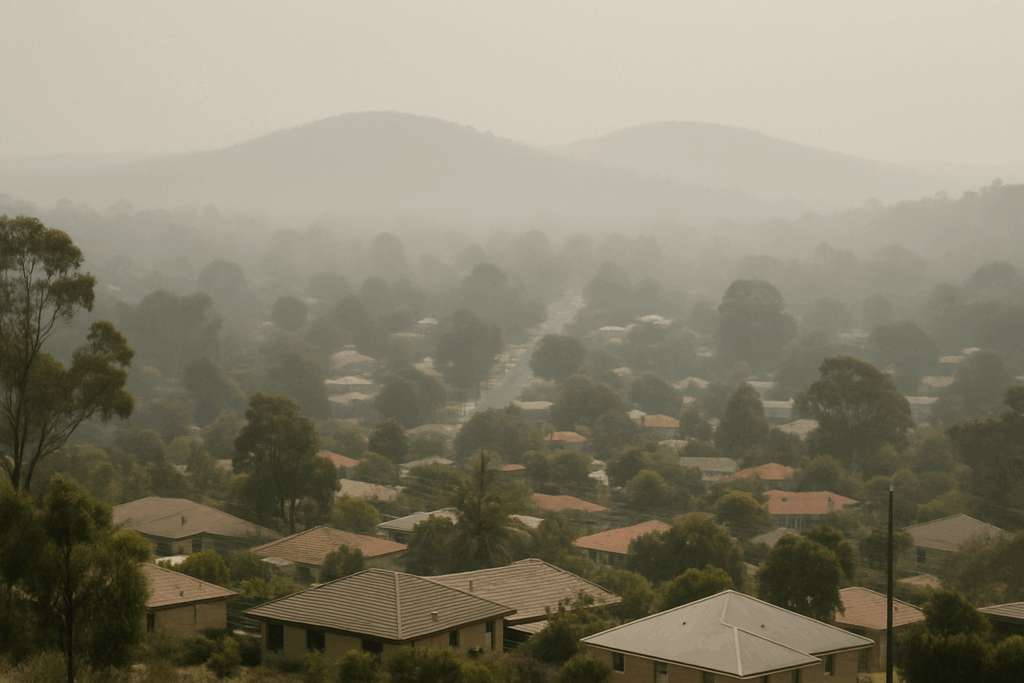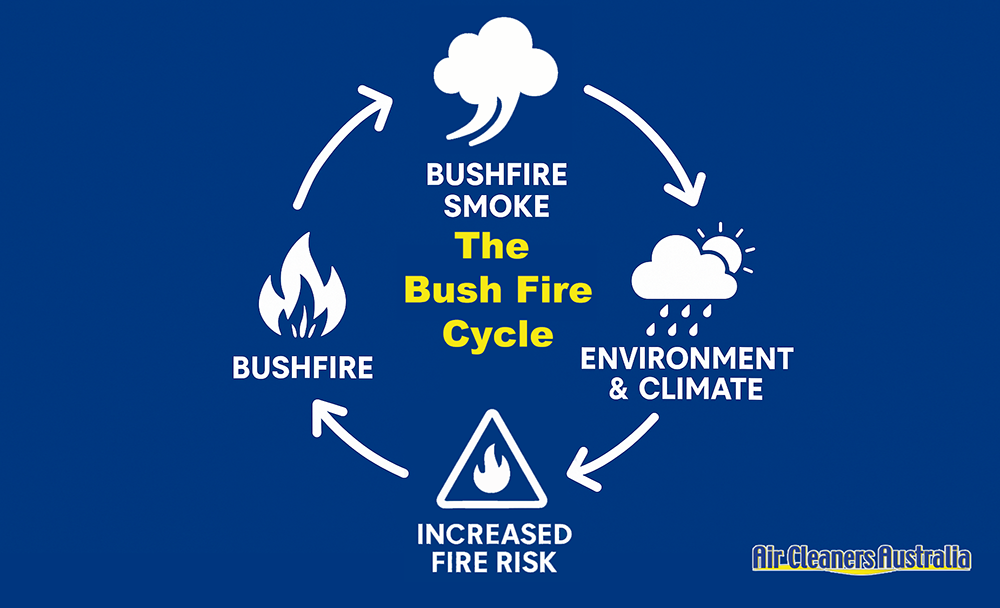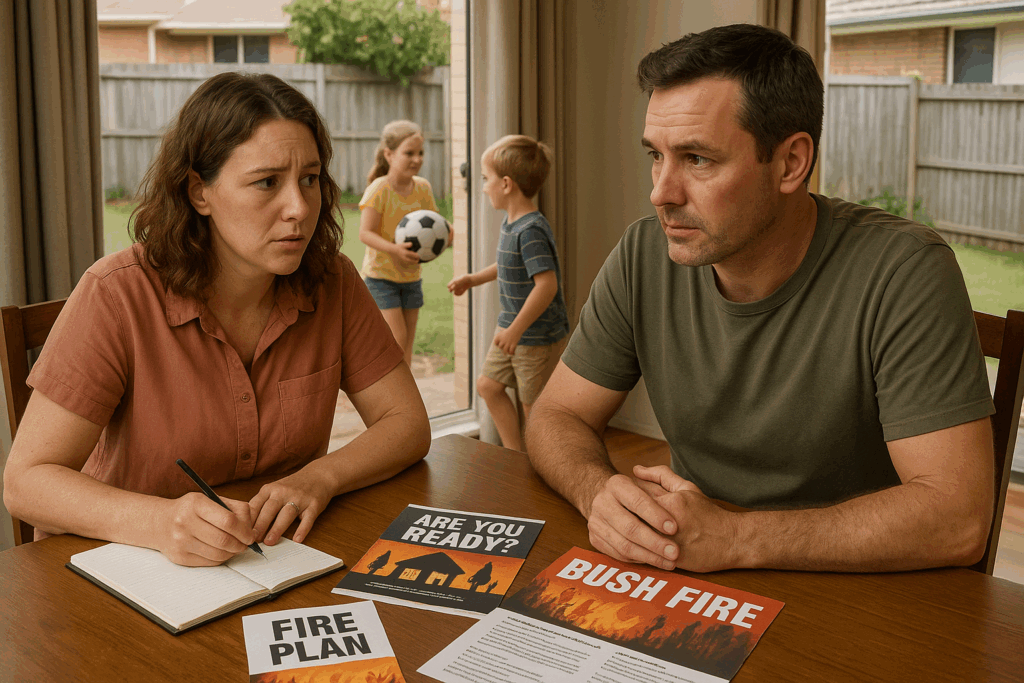Bush fires have always been a part of the Australian landscape — from dry grasslands to dense eucalyptus forests. But in recent years, these fires have become more frequent, more intense, and more unpredictable. So, what’s changing? And more importantly, what does it mean for the air we breathe?

While some regions of the world refer to them as "wildfires", here in Australia we know them as bush fires — and they’re becoming harder to ignore. The 2019–2020 Black Summer bush fires were among the worst in recorded history, burning more than 24 million hectares and destroying over 3,000 homes and destroying wildlife habitation and native animals. Most tragically, the fires directly claimed at least 33 lives, but the smoke haze that blanketed major cities like Sydney, Canberra and Melbourne is estimated to have contributed to over 400 more deaths due to smoke-related illness.
Since then, hotter, drier conditions and longer fire seasons have increased the likelihood of severe bush fire events. Climate scientists confirm what many of us already feel: bush fires are not just getting worse — they’re becoming our new reality.
Australia isn't alone in this. From Canada to Greece and the western United States, massive fires have dominated news headlines in recent years. These international events highlight a global trend — rising temperatures and drier landscapes are creating perfect conditions for uncontrolled fires.
But there are local nuances too. For example, while snowpack melt is a major factor in the fire seasons of North America, this isn’t as significant in Australia due to our generally milder alpine zones. That said, the Snowy Mountains and parts of Victoria’s high country have experienced increased fire risk during particularly dry summers, and it’s something that authorities are keeping a close eye on.

To reduce the risk of uncontrollable bush fires, land management agencies and fire services regularly carry out planned burn-offs (also known as hazard reduction burns or prescribed burns). These are controlled fires set under specific weather conditions to reduce flammable undergrowth, leaf litter, and other debris that could fuel a major bush fire.
While burn-offs are a critical tool in bush fire prevention, they come with their own set of challenges — particularly when it comes to air quality. Even though these burns are carefully managed, they can still produce significant amounts of smoke, especially when carried out over large areas or during consecutive days.
People living near forests or in peri-urban areas may experience smoky conditions during the burn-off season, which usually occurs in autumn and spring. Like bush fire smoke, this smoke contains PM2.5 particles that can affect those with respiratory issues or sensitivities.
One of the biggest concerns with bush fires — beyond the immediate threat to life and property — is the smoke. Bush fire smoke contains fine particulate matter known as PM2.5, which can penetrate deep into the lungs and enter the bloodstream. These particles are linked to a range of health issues, including asthma flare-ups, respiratory infections, heart problems, and even premature death.
In 2020, Canberra reportedly had the worst air quality in the world for several days due to smoke from surrounding fires. Even if a fire isn’t burning right next to your home, the smoke can travel hundreds of kilometres, impacting people far from the fire line.
Bush fire smoke is made up of a complex mixture of gases and fine particles, but the most harmful component for human health is PM2.5 — tiny particles that are 2.5 microns or smaller. These particles are small enough to bypass the body's natural defences and lodge deep in the lungs, and from there, can even enter the bloodstream.
Here’s how PM2.5 and bush fire smoke can impact your health:
Even short-term exposure to bush fire smoke can have health consequences, and repeated exposure over multiple seasons — which is becoming more common — may carry longer-term risks we’re still learning about.
When smoke levels soar, staying indoors may seem like a safe option. But bush fire smoke can still seep into homes through gaps in windows, doors and ventilation systems — especially in older Australian homes, which are often not well-sealed.
This is where higher performance air purifiers come in. Many standard air purifiers offer a HEPA standard filter but this probably isn’t adequate for protection. That is because the HEPA standard is measured at 0.3 microns but most of the particulate in bushfire smoke is smaller than this. So, the particles pass straight through a HEPA filter. By comparison, the IQAir Healthpro 250 filters more than 100x smaller than HEPA – at an astounding .003 microns. This is virtually all particle matter, no matter how small. This degree of filtration is essential in protecting your family’s health during prolonged smoke events during bush fire season. They’re especially essential for vulnerable groups like children, the elderly, and those with respiratory conditions.

With climate projections pointing to more frequent and intense bush fires in Australia’s future, it’s time to think beyond the emergency response and start considering year-round air quality protection. This includes:
Bush fires are an unavoidable part of life in Australia — but they’re no longer just a summer problem. As the climate changes, so too must our approach to health and safety. Being prepared, understanding the risks, and investing in indoor air quality solutions can help protect your home and your health all year round.
At Air Cleaners Australia, we’re committed to helping Australians breathe cleaner air, no matter what the bush fire season brings.
